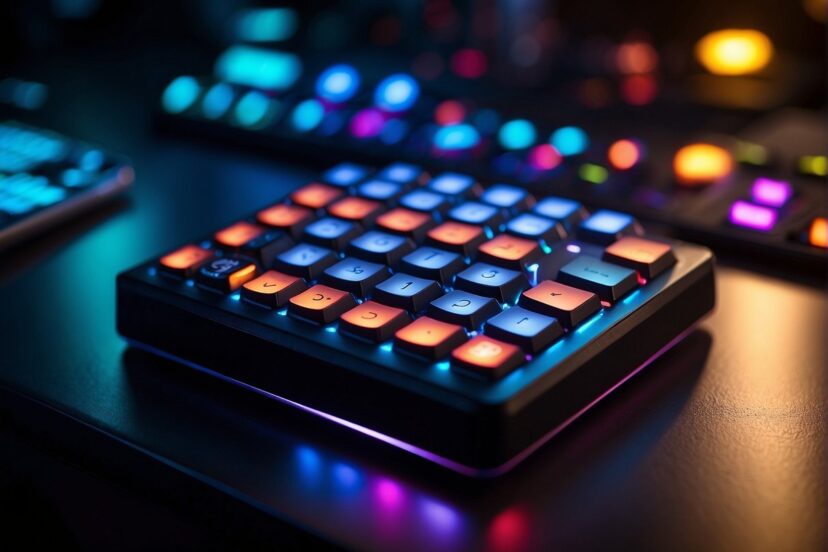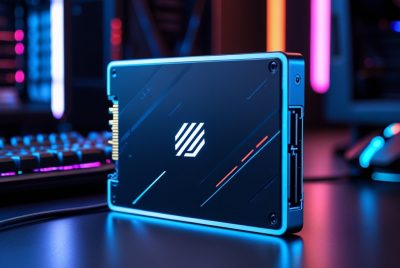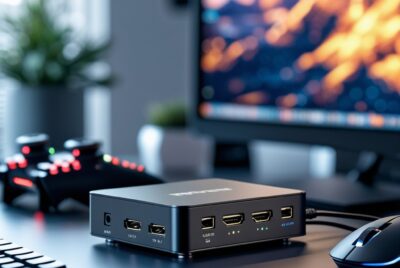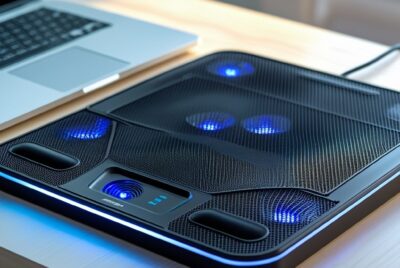Gaming Keypad Essentials: Choosing the Right One
*We may earn a commission for purchases made using our links. Please see our disclosure to learn more.
Gaming Keypad Essentials: Choosing the Right One for Your Needs
As a savvy gamer always searching for a competitive edge, I’ve found that investing in a gaming keypad can provide numerous advantages over traditional keyboards. These specialized input devices are designed to offer a more ergonomic form factor and streamlined functionality, which can significantly enhance gaming performance, particularly in fast-paced genres like FPS (First Person Shooter) games. Gaming keypads often feature programmable keys, ergonomic designs, and in some cases, customizable RGB lighting, which not only improves the gaming experience but also adds a personal aesthetic touch to gaming setups.
My experience with gaming keypads leads me to appreciate their compact size, which often comes from the absence of the less frequently used keys found on full-size keyboards. This design choice allows for a more focused and comfortable hand placement, which can reduce strain during prolonged gaming sessions. Additionally, gaming keypads like the Razer Tartarus V2 and others in the market often include mechanical or mecha-membrane key switches that provide tactile feedback and responsiveness, qualities that are critical for precise and swift in-game actions.
When considering a gaming keypad, it’s important to look for features such as the number of programmable keys, the type of key switches, build quality, and software support for key mapping and macro creation. Some keypads also offer an analog stick or a directional pad, further broadening the control options available to the user. These aspects are crucial for tailoring the device to one’s specific gaming needs and play style, ensuring that every keystroke and command is meaningful and contributes to an immersive and victorious gaming experience.
Understanding a Gaming Keypad

In my exploration of gaming keypads, I find them to be specialized peripherals that bolster efficiency and comfort for gamers. My focus will be on their defining features, the switches they employ, and the ergonomic benefits they offer.
Key Features of a Gaming Keypad
Gaming keypads typically have a smaller set of keys compared to a full-sized keyboard, often around 20 to 30 programmable keys. For instance, the Razer Tartarus Pro stands out with its 32 programmable keys, which allow for a multitude of in-game commands and macros to be executed at the touch of a button. A unique feature I’ve seen is the 8-way directional thumbpad, which enhances navigation in-game.
- Programmable keys: Customize individual key functions.
- Macros: String multiple commands into a single keypress.
- Profile switching: Toggle between different sets of keybinds.
Types of Mechanical Switches
The switches under the keys are pivotal in defining the keypad’s performance. Mechanical switches are common, known for their durability and distinct tactile feedback. For example, Cherry MX switches are popular, praised for their reliability and consistency. Some gaming keypads go further, like the Tartarus Pro which features analog optical switches, offering adjustable actuation for a more tailored response.
- Mechanical switches: Provide tactile feedback and faster actuation.
- Mecha-membrane: A hybrid that offers a soft touch with a clicky response.
- Analog optical switches: Allow for varying levels of pressure sensitivity.
Ergonomics and Comfort
Ergonomics in gaming keypads such as an ergonomic wrist rest and an intelligently designed key layout are crucial for long gaming sessions. For instance, keypads often sport a tenkeyless design, which is compact and reduces hand travel. Good ergonomics is a staple of products like the Razer Tartarus Pro, featuring an adjustable wrist rest and an ergonomically shaped key layout to reduce hand strain.
- Ergonomic design: Tailored to natural hand positioning.
- Wrist rest: Alleviates pressure on the wrist during prolonged use.
- Compact form factor: Minimizes hand movement and potential strain.
Choosing the Right Gaming Keypad

When selecting a gaming keypad, I prioritize factors such as the presence of programmable keys, ergonomic design, and the quality of mechanical switches. My goal is to find a balance between comfort and performance that meets my specific gaming needs.
Considerations for a Gaming Keypad
In my experience, the best gaming keypads come with programmable keys which allow for setting up macros – sequences of actions executed with a single key press. This is crucial for games where speed and efficiency are key. A well-designed gaming keypad will often include a wrist rest to prevent fatigue during long gaming sessions, and mechanical switches that offer a superior tactile response and durability.
Anti-ghosting tech is another feature I look for. It ensures that every key press is registered, even when multiple keys are pressed simultaneously. Some gaming keypads also offer backlighting, which is particularly useful in low-light conditions and adds an aesthetic touch.
The choice between wired and wireless keypads comes down to personal preference. I appreciate the portability and clutter-free setup of wireless keypads, but a wired connection can offer quicker response times and doesn’t require charging.
Popular Gaming Keypad Brands
My research and personal testing have led me to trust certain brands more than others for their reliability and feature set. Here are a few I consider to be at the top:
- Razer: Known for high-quality gaming peripherals with models like the Razer Tartarus V2 and Razer Tartarus Pro, both featuring abundant programmable keys and ergonomic design.
- Logitech: This brand has been a long-standing player in the gaming industry with robust and well-crafted devices, like the Logitech G13.
- Koolertron: Offers customizable keypads that cater to specialized needs and preferences, focusing on portability and ease of programming.
Each brand brings its own strengths to the table, and I always recommend considering the unique features of each to find the best fit for one’s gaming style.
Enhancing Gaming Performance

In my experience optimizing your gaming setup, particularly the customization of your gaming keypad, can lead to significant enhancements in control and efficiency during extensive gaming sessions. Focusing on setting up personalized profiles and implementing advanced features can transform the way you interact with your games.
Setting Up Profiles and Macros
To start, I create profiles for each game I play regularly. This lets me switch between settings quickly without having to reconfigure my keypad for each session. For example, with my Razer BlackWidow, I use the dedicated software, Razer Synapse, to assign specific actions to programmable keys. Here’s a simple breakdown of how I set up my profiles and macros:
- Open Razer Synapse: I launch the software and log into my account.
- Profiles Creation: I create a new profile for each game and label it clearly.
- Macro Recording: For actions required in a game, I record a sequence of keystrokes—these are my macros.
- Assign Macros: I link these macros to specific programmable keys on my keypad.
- Save and Sync: Once I’m satisfied, I save the profile and ensure it’s activated before starting my game.
Keep in mind, establishing macros allows me to execute complex commands with a single key press, elevating my gameplay by saving time and improving reaction speed.
Advanced Features and Customizations
Beyond simple macros, I delve into advanced customizations that can make all the difference during a gaming session. Consider these features:
- Programmable Keys: I ensure every key has a purpose. The more actions I can execute from my keypad, the less I need to rely on mouse clicks or memorizing key combinations.
- Backlighting: Customizable backlighting isn’t just for aesthetics. I set different colors for various key groups, enhancing muscle memory and reducing the chance of pressing the wrong key.
- Hot-Swappable and PBT Keycaps: On some keypads, like the Razer Huntsman V3 Pro, keys are hot-swappable, meaning I can easily replace them to suit my touch preference without soldering. PBT keycaps are more durable and provide a better feel than standard ABS caps.
Here’s a quick reference table indicating the enhancements I apply:
| Feature | Benefit |
| Profiles and Macros | Quick actions and easy profile swapping |
| Programmable Keys | Efficient control during gameplay |
| Customizable Backlighting | Visual cues for key recognition |
| Hot-Swappable/PBT Keycaps | Personalized feel and durability |
Through a careful selection of features and customizations, I’ve noticed my gaming performance improve noticeably. I maintain a neutral stance, suggesting that while these adjustments work well for me, individual preferences and game requirements can influence the ideal setup.
Maintenance and Care

To maximize performance and longevity, I focus on consistent maintenance and leverage support options for my gaming keypad. Keeping components in top shape ensures a lasting gaming experience.
Keycap Replacement and Cleaning
When cleaning PBT keycaps — known for their durability — I use a keycap puller to detach them gently. Cleaning the Keycaps:
- Remove keycaps with a keycap puller.
- Wash with warm, soapy water.
- Rinse thoroughly.
- Let them air dry completely before reattaching.
For the body of mechanical gaming keypads, I apply compressed air to dislodge debris from between the switches. A microfiber cloth dampened with isopropyl alcohol helps remove oily residues without causing damage.
Warranty and Customer Support
I always check the warranty terms of gaming keypads, as companies like Razer often offer extensive coverage. Razer Support Plan:
- Duration: Typically, a 2-year warranty.
- Coverage: Includes manufacturing defects and workmanship issues.
- Process: Contact support through the official Razer website for claims or troubleshooting.
It’s critical to take advantage of warranty services and customer support to address any hardware malfunctions promptly. Maintaining a stable relationship with customer support can simplify resolving potential issues that might arise with my device.
Frequently Asked Questions

In this section, I’ll address some of the most common inquiries regarding gaming keypads to help you better understand their benefits and what to look for when choosing one.
1. What are the advantages of using a gaming keypad over a traditional keyboard?
Gaming keypads are designed for ergonomic comfort and improved efficiency during gameplay. They often feature programmable keys and a more compact layout tailored to gaming, reducing the distance fingers need to travel for key actions.
2. Which gaming keypads offer wireless functionality?
Several models offer wireless connectivity to provide a cleaner setup with fewer cables. Key examples include the Logitech G915 with its low-profile design and Razer’s Turret, which is also designed for console use.
3. How do gaming keypads with integrated joysticks enhance the gaming experience?
An integrated joystick allows for more intuitive movement control, particularly in simulation and flying games. It combines the precision of a keyboard with the fluid motion of a joystick, offering a cohesive control scheme.
4. Which brands or models are considered the best gaming keypads currently on the market?
Brands like Razer, with its Tartarus and Orbweaver series, and Logitech’s G-series keypads are highly regarded. The Koolertron Cherry MX Red Programmable Gaming Keypad is also noted for its strong performance despite its minimalistic design.
5. What are the key factors to consider when purchasing a gaming keypad?
Key factors include the type of switches (mechanical, membrane), ergonomics, programmability, backlighting (RGB or single color), and whether features like anti-ghosting and N-Key Rollover are present. A comfortable wrist rest is also a significant plus.




